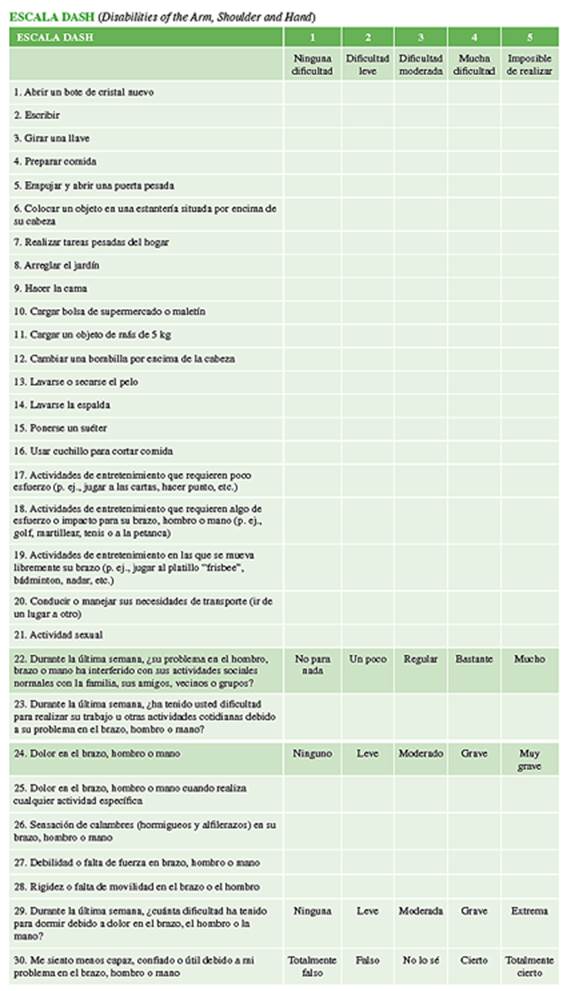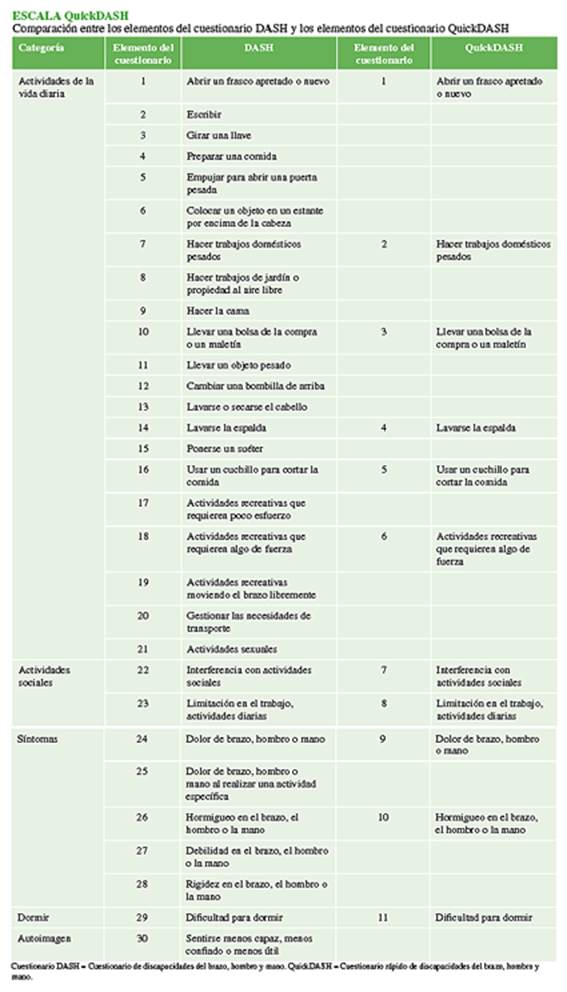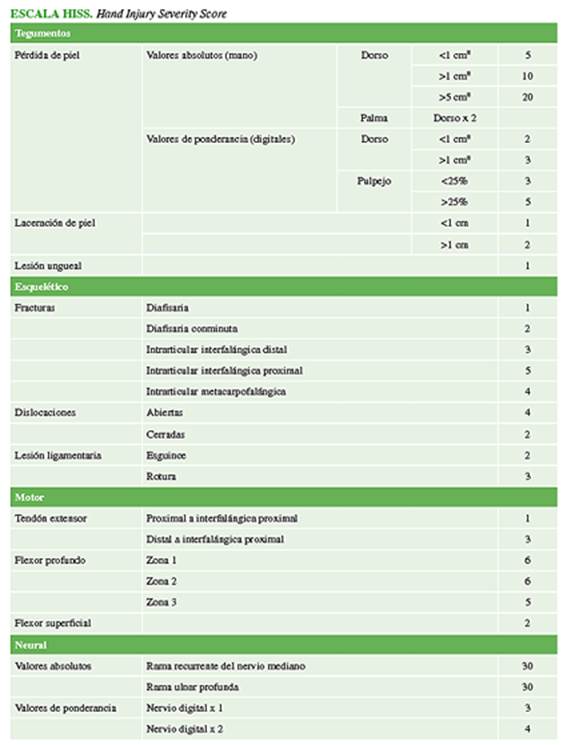INSTRUCCIÓN
ORTOPÉDICA DE POSGRADO
Puntajes II
Ernesto Bersusky,*
Ignacio Arzac Ulla,** Lidia G. Loterzo,# Guillermo
Ricciardi,## Gerardo Zanotti,ǂ Juan Martín Patiñoǂǂ
*Hospital de Pediatría “Prof. Dr.
Juan P. Garrahan”, Ciudad Autónoma de Buenos Aires, Argentina
**BR Traumatología, Azul, Buenos
Aires, Argentina
#Hospital Central de San Isidro
“Dr. Melchor Á. Posse”, Buenos Aires, Argentina
##Hospital General de Agudos “Dr.
Teodoro Álvarez”, Ciudad Autónoma de Buenos Aires, Argentina ǂHospital
Italiano de Buenos Aires, Ciudad Autónoma de Buenos Aires, Argentina
ǂǂHospital Militar Central
“Cirujano Mayor Dr. Cosme Argerich”, Ciudad Autónoma de Buenos Aires, Argentina
RESUMEN
El Comité Editorial
quiere brindar a sus lectores una actualización de las escalas de uso
corriente. El empleo de tablas y escalas es una práctica muy extendida en la
Ortopedia y Traumatología. La medición y la cuantificación de los aspectos
clínicos, funcionales y radiográficos se convirtieron en una herramienta
imprescindible para la toma de decisiones en diferentes aspectos de la
actividad asistencial. Llevamos a cabo una revisión de las escalas más
utilizadas, definiendo su uso e incluyendo bibliografía original y actualizada.
Palabras clave: Escalas; puntajes; tablas; actualización.
Nivel de Evidencia: V
Scores II
ABSTRACT
The Editorial
Committee wants to provide its readers with an update on the commonly used
scales. The use of tables and scales is a widespread practice in Orthopedics
and Traumatology. The measurement and quantification of clinical, functional,
and radiographic aspects have become essential tools for decision-making in
different aspects of healthcare activity. We carried out a review of the most
used scales, defining their use and including original and updated literature.
Key words: Scales; scores; tables; update.
Level of Evidence: V
Introducción
El Comité
Editorial quiere brindar a sus lectores una actualización de las escalas de uso
corriente. El empleo de tablas y escalas es una práctica muy extendida en la
Ortopedia y Traumatología. La medición y la cuantificación de los aspectos
clínicos, funcionales y radiográficos se convirtieron en una herramienta
imprescindible para la toma de decisiones en diferentes aspectos de la
actividad asistencial.
Llevamos
a cabo una revisión de las escalas más utilizadas, definiendo su uso e
incluyendo bibliografía original y actualizada; en esta oportunidad, nos ocupa
la sección de puntajes en mano.

Bibliografía sugerida
- Beaton DE, Katz JN, Fossel AH, Wright JG, Tarasuk V,
Bombardier C. Measuring the whole or the parts?: validity, reliability, and
responsiveness of the Disabilities of the Arm, Shoulder and Hand outcome
measure in different regions of the upper extremity. J Hand Ther
2001;14(2):128-42. PMID: 11382253
- http://www.dash.iwh.on.ca/available-translations
- Hosokawa T, Tajika T, Suto M, Chikuda H. The Quick
Disabilities of the Arm, Shoulder, and Hand (QuickDASH) scores in 961 Japanese
volunteers. J Orthop
Surg (Hong Kong) 2020;28(3):2309499020970656. https://doi.org/10.1177/2309499020970656
- Hillesund S, Fromreide I, Foss OA, Finsen V. The value
of remembered pre-operative quick disabilities of the arm, shoulder and hand
(QuickDASH) scores. J Plast
Surg Hand Surg 2018;52(5):294-300. https://doi.org/10.1080/2000656X.2018.1483938
- Smith-Forbes V, Howell DM, Willoughby J, Pitts DG, Uhl
TL. A retrospective cohort study of QuickDASH scores for three hand therapy
acute upper limb conditions. Mil Med
2018;183(suppl_1):522-9. https://doi.org/10.1093/milmed/usx199
- Barai A, Lambie B, Cosgrave C, Baxter J. Management of
distal radius fractures in the emergency department: A long-term functional
outcome measure study with the Disabilities of Arm, Shoulder and Hand (DASH)
scores. Emerg Med
Australas 2018;30(4):530-7. https://doi.org/10.1111/1742-6723.12946
- Wormdal AH, Tallaksen SH, Hagen Ø, Foss OA, Finsen V.
Remembered preoperative Quick disabilities of the arm, shoulder and hand
(QuickDASH) scores. J Hand
Surg Eur Vol 2017;42(1):78-83. https://doi.org/1177/1753193416665299

Bibliografía sugerida
- Angst F, Schwyzer HK, Aeschlimann A, Simmen BR,
Goldhahn J. Measures of adult shoulder function: Disabilities of the Arm,
Shoulder, and Hand Questionnaire (DASH) and its short version (QuickDASH),
Shoulder Pain and Disability Index (SPADI), American Shoulder and Elbow
Surgeons (ASES) Society standardized shoulder assessment form, Constant
(Murley) Score (CS), Simple Shoulder Test (SST), Oxford Shoulder Score (OSS),
Shoulder Disability Questionnaire (SDQ), and Western Ontario Shoulder
Instability Index (WOSI). Arthritis Care
Res (Hoboken) 2011;63 Suppl 11:S174-88. https://doi.org/10.1002/acr.20630
- Hong SW, Gong HS, Park JW, Roh YH, Baek GH. Validity,
reliability and responsiveness of the Korean version of Quick Disabilities of
the Arm, Shoulder, and Hand Questionnaire in patients with carpal tunnel
syndrome. J Korean
Med Sci 2018;33(40):e249. https://doi.org/10.3346/jkms.2018.33.e249
- Hillesund S, Fromreide I, Foss OA, Finsen V. The value
of remembered pre-operative quick disabilities of the arm, shoulder and hand
(QuickDASH) scores. J Plast
Surg Hand Surg 2018;52(5):294-300. https://doi.org/10.1080/2000656X.2018.1483938
- Smith-Forbes V, Howell DM, Willoughby J, Pitts DG, Uhl
TL. A retrospective cohort study of QuickDASH scores for three hand therapy
acute upper limb conditions. Mil Med
2018;183(suppl_1):522-9. https://doi.org/10.1093/milmed/usx199

Bibliografía sugerida
- Campbell DA, Kay SP. The Hand Injury Severity Scoring
System. J Hand Surg Br
1996;21(3):295-8. https://doi.org/10.1016/s0266-7681(05)80187-1
- Bhat AK, Acharya AM, Mishra D. Correlation of HISS and
Strickland Score with the Michigan Hand Outcome Questionnaire in hand injuries.
J Clin Orthop Trauma
2020;11(4):620-5. https://doi.org/10.1016/j.jcot.2020.05.026
- Çapkın S, Cavit A, Yılmaz K, Erdoğan E, Kaleli T.
Associations between initial injury severity in acute hand, wrist or forearm
injuries and disability ratings and time to return to work. Ulus Travma Acil Cerrahi Derg
2020;26(3):453-61. https://doi.org/10.14744/tjtes.2019.40524
- Tezel N, Can A. The association between injury
severity and psychological morbidity, hand function, and return to work in
traumatic hand injury with major nerve involvement: A one-year follow-up study.
Ulus Travma Acil Cerrahi Derg
2020;26(6):905-10. https://doi.org/10.14744/tjtes.2020.39472

Bibliografía sugerida
- Levine DW, Simmons BP, Koris MJ, Daltroy LH, Hohl GG,
Fossel AH, et al. A self-administered questionnaire for the assessment of
severity of symptoms and functional status in carpal tunnel syndrome. J Bone Joint Surg Am
1993;75(11):1585-92. https://doi.org/10.2106/00004623-199311000-00002
- de Carvalho Leite JC, Jerosch-Herold C, Song F. A
systematic review of the psychometric properties of the Boston Carpal Tunnel
Questionnaire. BMC
Musculoskelet Disord 2006;7:78. https://doi.org/10.1186/1471-2474-7-78
- Oteo-Álvaro
Á, Marín MT, Matas JA, Vaquero J. Validación al castellano de la escala Boston
Carpal Tunnel Questionnaire. Med Clin
(Barc) 2016;146(6):247-53. https://doi.org/10.1016/j.medcli.2015.10.013
- Andani
Cervera J, Balbastre Tejedor M, Gómez Pajares F, Garrido Lahiguera R, López
Ferreres A.. Valoración del cuestionario de BOSTON como screening en patología
laboral por síndrome del tú́nel carpiano. Rev
Asoc Esp Espec Med Trab [online]. 2017;26(1):31-8. Disponible en: https://scielo.isciii.es/scielo.php?script=sci_arttext&pid=S113262552017000100004#:~:text=El%20cuestionario%20de%20Boston%20incluye,s%C3%ADndrome%20del%20t%C3%BAnel%20carpiano%20laboral
ORCID de E. Bersusky: https://orcid.org/0000-0002-3121-9326
ORCID de G. Zanotti: https://orcid.org/0000-0001-8090-4832
ORCID de L. G. Loterzo: https://orcid.org/0000-0001-5465-1747
ORCID de J. M. Patiño: https://orcid.org/0000-0002-9036-0442
ORCID de G. Ricciardi: https://orcid.org/0000-0002-6959-9301
Dr. IGNACIO ARZAC ULLA • ignacioarzac@hotmail.com
• https://orcid.org/0000-0002-5038-7720
Cómo citar este artículo: Bersusky E, Arzac Ulla I, Loterzo LG,
Ricciardi G, Zanotti G, Patiño JM. Puntajes II. Rev Asoc Argent Ortop Traumatol 2022;87(3):447-453. https://doi.org/10.15417/issn.1852-7434.2022.87.3.1583
Información del artículo
Identificación: https://doi.org/10.15417/issn.1852-7434.2022.87.3.1583
Fecha de publicación: Junio, 2022
Conflicto de intereses: Los autores no declaran conflictos de intereses.
Copyright: © 2022, Revista de la
Asociación Argentina de Ortopedia y Traumatología.
Licencia: Este artículo está bajo una
Licencia Creative Commons Atribución-No Comercial-Compartir Obras Derivadas
Igual 4.0 Internacional. (CC-BY-NC-SA 4.0)